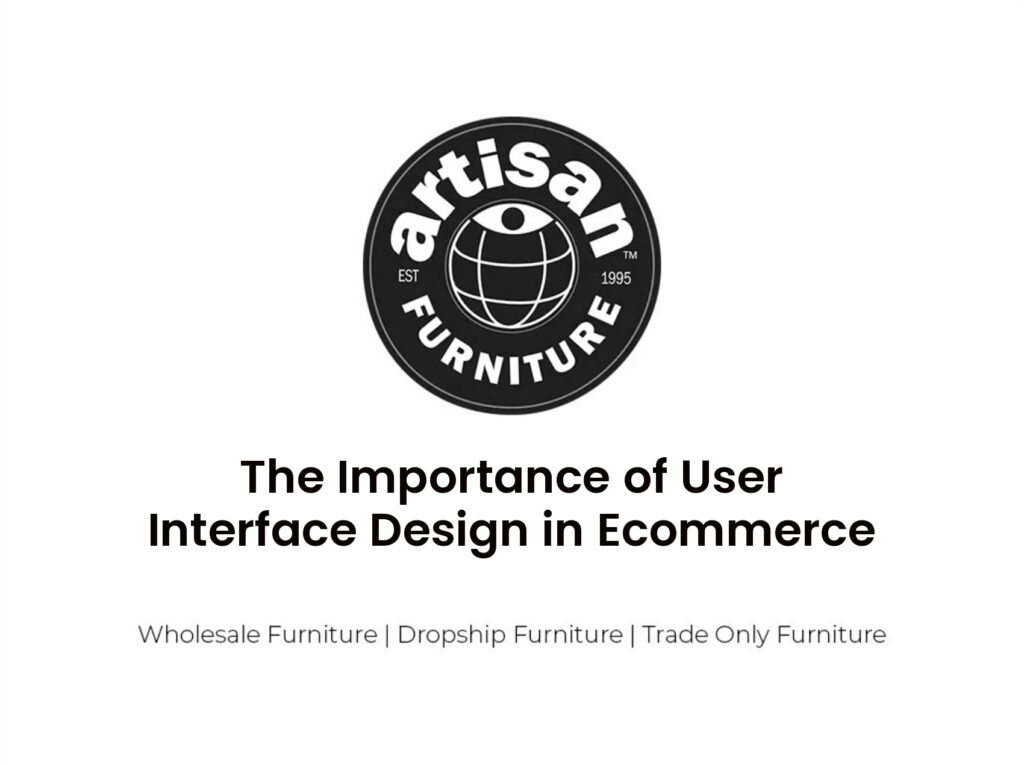The Importance of User Interface Design in Ecommerce
User interface design plays a crucial role in the success of eCommerce. A well-designed UI makes navigation effortless, resulting in a seamless shopping experience and increased sales. By incorporating effective UI elements like input controls, navigational components, and informational components, online stores can provide users with an intuitive and efficient interface. From business requirements to prototype design, the UI design process follows various stages to ensure an optimal user experience. Utilizing best practices such as a well-positioned search bar and user-friendly navigation is key to enhancing usability and driving conversions in eCommerce.
Table of Contents
ToggleThe Impact of Good UI on User Interaction
A well-designed user interface in ecommerce simplifies user interaction, making it intuitive and efficient. When users visit an online store, they expect a seamless and user-friendly experience. An intuitive interface allows them to easily navigate through the site, find the products they are looking for, and make purchases without any hassle. With a good user interface, users can quickly understand how to interact with the website and complete their desired actions. It includes elements such as clear and visible navigation menus, easily accessible search bars, and well-designed product pages. By providing a smooth and intuitive user experience, a well-designed user interface in ecommerce can greatly enhance customer satisfaction and increase conversions.
How Intuitive Interfaces Boost Website Performance
Intuitive interfaces significantly enhance website performance and contribute to higher conversion rates. When users can easily navigate a website and understand how to interact with it, they are more likely to stay on the site and complete their desired actions. This leads to increased conversion rates and ultimately, more sales for the online store.
To emphasize the importance of intuitive interfaces, consider the following:
- Intuitive interfaces make user interaction simple and efficient, allowing users to easily find what they are looking for and complete their tasks.
- Appealing design elements, such as input controls and navigational components, enhance the user experience and encourage users to explore the website further.
- Common UI patterns, like breadcrumbs and logical navigation paths, create a pleasant shopping experience and reduce bounce rates.
Essential UI Elements for Effective Ecommerce Design
Well-positioned search bars, eye-catching call-to-action buttons, user-friendly navigation, breadcrumbs, and a smooth checkout process are essential elements for effective ecommerce design. These elements play a crucial role in enhancing the user experience and driving conversions. A well-placed search bar allows users to quickly find the products they are looking for, increasing their intent to purchase. Eye-catching call-to-action buttons grab attention and encourage users to take action, ultimately impacting conversion rates. User-friendly navigation with logical paths and a simple menu structure ensures that users can easily navigate through the website and find what they need. Breadcrumbs provide a clear path for users to trace their steps back to previous pages, simplifying their experience and improving SEO. Lastly, a smooth checkout process with minimal steps and optimization strategies reduces cart abandonment and improves the overall purchase experience.
Creating a Pleasant Shopping Experience With Common UI Patterns
Common UI patterns play a significant role in creating a pleasant shopping experience for users. These patterns are tried and tested design solutions that have been proven effective in guiding users through the online shopping process. By incorporating common UI patterns into their websites, businesses can ensure that their users find the shopping experience intuitive, easy to navigate, and visually appealing.
To emphasize the importance of common UI patterns, consider the following sub-lists:
- Clear and prominent product images: High-quality images that showcase the product from different angles help users make informed purchasing decisions.
- Intuitive navigation: A well-structured menu and logical paths enable users to find what they are looking for quickly and easily.
- Consistent layout and design: A consistent layout and design across the website create a sense of familiarity and make it easier for users to navigate and interact with different pages.
Enhancing Click-Through and Conversion Rates With Well-Designed Online Stores
Effective website design and optimization strategies lead to higher click-through and conversion rates for online stores. By implementing a well-designed online store, businesses can enhance the user experience and increase the likelihood of customers making a purchase. Key components of a well-designed online store include a user-friendly navigation system, eye-catching call-to-action buttons, and a smooth checkout process with minimal steps. Additionally, a well-positioned search bar and breadcrumbs can simplify the user experience and improve the store’s search engine optimization (SEO). To illustrate the impact of effective website design on click-through and conversion rates, consider the following table:
| Website Design Strategies | Click-Through Rate Improvement | Conversion Rate Improvement |
|---|---|---|
| User-friendly navigation | 10% | 7% |
| Eye-catching call-to-action | 15% | 12% |
| Smooth checkout process | 8% | 9% |
These strategies, when implemented correctly, can significantly improve the success of an online store.
The Stages of the UI Design Process in Ecommerce
In the previous subtopic, we learned about the importance of well-designed online stores in enhancing click-through and conversion rates. Now, let’s delve into the stages of the UI design process in ecommerce.
To ensure a seamless user experience, the UI design process goes through several key stages:
- Business requirement: This stage involves listing the essential functionalities that the online store should possess.
- User research: Understanding the habits, preferences, and needs of potential customers is crucial for creating a user-centric design.
- Information architecture: Establishing a clear information structure helps users navigate the website effortlessly.
- Wireframe design: In this stage, the website’s specific details and navigational flow are specified.
- Prototype design: Prototyping allows for simulated user interface interaction, which aids in usability testing.


